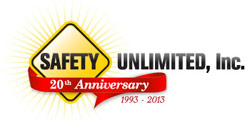moc.detimilnuytefas@nullofni
1-888-309-SAFE (7233)
This Inorganic Arsenic Awareness for General Industry and Construction course provides a general awareness of the risks and the regulatory requirements for protecting employees who work across the many industries in which exposure to inorganic arsenic may occur, as required by OSHA.
While arsenic is a natural component of the earth’s crust, in its inorganic form it is highly toxic. It is used industrially as an alloying agent (primarily of lead), as well as in the processing of glass, pigments, textiles, paper, metal adhesives, wood preservatives, and ammunition, the manufacture of semiconductors, as well as in the hide tanning process and, to a limited extent in pesticides, feed additives, and pharmaceuticals where its use is now restricted. Exposure may also occur in the smelting of various substances and when transportation bulk arsenic and bulk arsenicals.
The EPA and the International Agency for Research on Cancer have both classified inorganic arsenic as carcinogenic. Studies have confirmed inorganic arsenic to be strongly associated with lung cancer when inhaled and with skin cancers and bladder, liver, and lung cancer when ingested. Short-term exposure via inhalation of arsine, the poisonous gas used in the semi-conductor industry, has resulted in death; it has been reported that a half-hour exposure to 25 to 50 parts per million (ppm) can be lethal. The major effects from acute arsine exposure in humans include headaches, vomiting, abdominal pains, hemolytic anemia, hemoglobinuria, and jaundice; these effects can lead to kidney failure.
Per the California Department of Public Health, Safety Unlimited, Inc. is authorized to offer 1 Contact Hour (0.1 CEUs) of Continuing Education (CE) for this program.
While these CE units are intended for Registered Environmental Health Specialists (REHS) in California, they are often transferred to other accrediting bodies. Please check with your specific agency for more details and to learn if your agency accepts this course for CE credit (Public Health Accreditation #044).
Safety Unlimited, Inc. is authorized by IACET to offer 1 Contact Hour (0.1 CEUs) of Continuing Education (CE) for this program.
Safety Unlimited, Inc. (Provider #5660170-2) is accredited by the International Association for Continuing Education and Training (IACET). Safety Unlimited, Inc. complies with the ANSI/IACET Standard, which is recognized internationally as a standard of excellence in instructional practices. As a result of this accreditation, Safety Unlimited, Inc. is accredited to issue the IACET CEU. As an IACET Accredited Provider, Safety Unlimited, Inc. offers CEUs for its programs that qualify under the ANSI/IACET Standard.
This fully narrated course is built for success, and includes interactions, exercises, and quiz questions intended to help prepare students for the final exam. Students must answer each quiz question and complete each interaction in order to proceed.
This course has one final exam based upon the material in the 3 course sections.
The exam consists of 10 questions selected at random from a larger pool of questions. A score of 70% or better is required to pass each exam. Students who do not pass the exam the first time may retake it as many times as necessary in order to pass.
The objective of this Inorganic Arsenic Awareness for General Industry and Construction course is to provide a general awareness of the risks and the regulatory requirements for protecting employees who work across the many industries where inorganic arsenic is used, as required by OSHA.
The course will also introduce students to the Occupational Safety and Health Regulations for Inorganic Arsenic, Subpart Z, Toxic and Hazardous Substances - 29 CFR 1910.1018.
Upon completion of this course, the student will be able to:
Employers are required to provide information and training for each affected employee prior to or at the time of initial assignment to a job involving potential exposure to Inorganic Arsenic. Employers must inform affected employees of the requirements of the Inorganic Arsenic Standard and its appendices as well as how to access or obtain a copy of it in the workplace.
Employers must assure that each employee in informed of the following:
Additionally, workers must receive training, when required by OSHA standards, on the specific hazards of their job. Training providers should be used to ensure credibility and augment a company’s training program. Therefore, in addition to the training provided by an outside party, a student should receive site-specific training supplied by their employer. This training should target the company’s unique approach to hazard prevention, including the use of site-specific equipment, health and safety policies, and emergency procedures. As a rule, this company-specific training should be well documented.
The bottom line in ALL SITUATIONS is that employers are required to ensure that their employees are adequately trained to do their job.
To learn more about our volume discounts for this training, visit our Volume Pricing page. We also offer an easy way to Enroll Multiple Students.
We're Celebrating 20 Years With 20% Off our most popular online training. No coupon code necessary!
